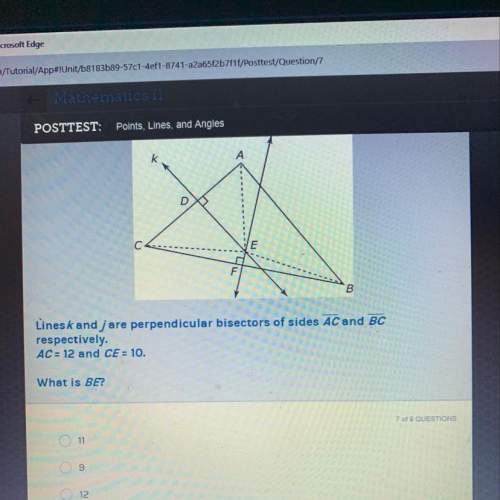
Mathematics, 07.03.2020 04:47 NewKidnewlessons
See the Central Limit Theorem in Action! Statisticians like to use software to simulate scenarios to see how statistical theorems hold up. In this activity, we will randomly generate populations of different shapes, randomly sample from them using different sample sizes and construct sampling distributions from repeated sampling. If all goes as planned, we should be able to validate the central limit theorem.
Getting Started:
Go to the following link https://courses. ecampus. oregonstate. edu/statistics/interactives/
Go to simulation 4 listed on the left hand side of the Statistics Interactives.
Q1. (4.5 points) From a normal population, investigate the shape, mean and standard deviation of randomly obtained sample with small n. Then sample 1000 samples of size n and investigate the shape, mean and standard deviation of the sampling distribution.
Instructions for Q1
Choose Normal as the "Distribution Type".
Then chose where you’d like the population to be centered. Do this by moving the slider under "Choose True Mean".
Next choose a sample size between 2 and 20 under the header "Choose Sample Size".
Choose 1000 for number of simualtions under the header "# of Simulations. You may need to wait a few moments for the simulation to run.
a. What is the shape of the population distribution?
b. The population mean and standard deviation are:
c. How big of a sample did you take? n =
d. The mean and standard deviation from the displayed sampled distribution are:
e. According to the central limit theorem, if the population is normal then the distribution of sample means will be normal with a mean of and a standard deviation of regardless of the sample size. Use your values from part Q1b to calculate the mean and standard deviation of the sampling distribution.
f. Based on the simulated distribution of sample means does the central limit theorem seem to hold? Describe the shape of the distribution of 1000 sample means. Is it normally distributed? What are the mean and standard deviation of the simulated means? These values should be somewhat close to the theoretical values from part Q1e, are they?
g. Now, change the sample size to a larger sample between 100 and 1000. How does the sampling distribution change based on the larger sample size? Be specific.

Answers: 2


Another question on Mathematics

Mathematics, 21.06.2019 16:10
In a sample of 200 residents of georgetown county, 120 reported they believed the county real estate taxes were too high. develop a 95 percent confidence interval for the proportion of residents who believe the tax rate is too high. (round your answers to 3 decimal places.) confidence interval for the proportion of residents is up to . would it be reasonable to conclude that the majority of the taxpayers feel that the taxes are too high?
Answers: 3

Mathematics, 21.06.2019 18:30
Abouncy ball is released from a certain height. on the first bounce, it travels 32cm. with each subsequent bounce, it travels 9/10 the distance of the previous bounce. what is the total distance that the ball has traveled when it completes its 25th bounce?
Answers: 1

Mathematics, 21.06.2019 20:40
Sh what is the value of x? ox= 2.25 x = 11.25 ox= x = 22 1 (2x + 10) seo - (6x + 1) -- nie
Answers: 3

Mathematics, 21.06.2019 22:30
Select all of the following expressions that are equal to 2.5.
Answers: 3
You know the right answer?
See the Central Limit Theorem in Action! Statisticians like to use software to simulate scenarios to...
Questions

Physics, 13.10.2020 19:01


Mathematics, 13.10.2020 19:01


Spanish, 13.10.2020 19:01

Mathematics, 13.10.2020 19:01


Business, 13.10.2020 19:01



Mathematics, 13.10.2020 19:01


English, 13.10.2020 19:01


Mathematics, 13.10.2020 19:01



History, 13.10.2020 19:01

Arts, 13.10.2020 19:01




